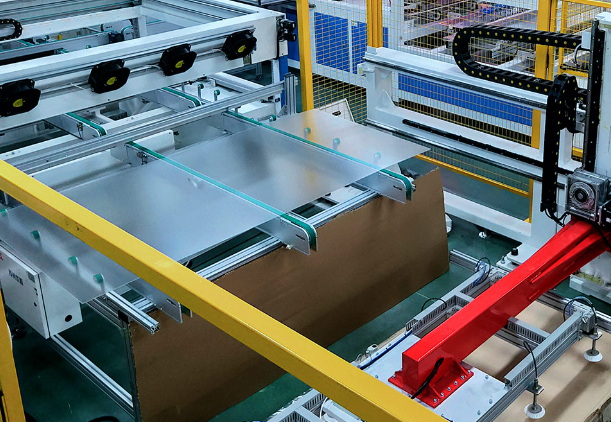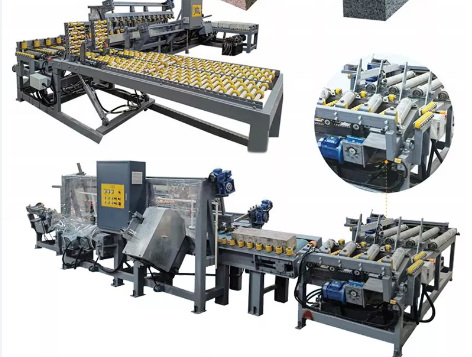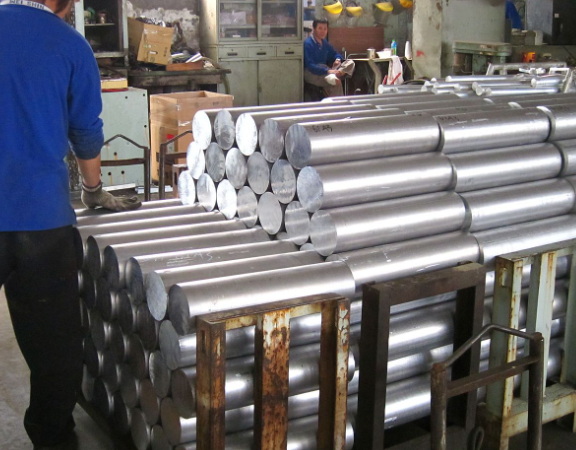Content Menu
● Benefits of Extrusion Technology
● Types of Pet Foods Made Using Extrusion
● The Science Behind Extrusion
>> Starch Gelatinization
>> Nutritional Preservation and Digestibility
● Advancements in Extrusion Technology
>> Twin Screw Extrusion
>> Automation and Real-Time Monitoring
● Sustainability in Pet Food Extrusion
● Factors Influencing the Pet Food Extrusion Market
>> Rising Demand for Premium Pet Food
>> Expansion of Retail Channels
>> Trends Towards Plant-Based and Alternative Proteins
>> Personalization and Customization
● Challenges in the Pet Food Extrusion Market
>> High Capital Investment
>> Energy Consumption
● The Future of Pet Food Extrusion
● Conclusion
● FAQ
>> 1. What is pet food extrusion?
>> 2. What are the main advantages of using extrusion technology in pet food production?
>> 3. How does extrusion improve the nutritional quality of pet food?
>> 4. What types of pet food can be produced using extrusion technology?
>> 5. What are the future trends in pet food extrusion?
● Citations:
Extrusion technology plays a crucial role in the efficient production of high-quality pet food products, offering a cost-effective method compared to labor-intensive processes like batch cooking[8]. This versatile technology has advanced, allowing pet food producers to capitalize on its capabilities and benefits[1]. Extrusion's flexibility allows for producing various shapes, sizes, and textures of pet food products[8].

Benefits of Extrusion Technology
- Efficiency and Cost-Effectiveness Extrusion reduces the time, labor, and energy required for pet food manufacturing through a continuous process[8]. The technology utilizes raw materials and energy efficiently[8]. An efficient process also leads to sustainability in the extrusion cooking of pet foods[5].
- Food Safety Extrusion provides a food-safe cooking method with an industry-standard Critical Control Point (CCP) for product temperature, ensuring the final product is high quality and safe for pet consumption[8]. The high-temperature process is an effective kill step for common pathogens like *Salmonella* and *E. coli*[2].
- Flexibility Extruders can process multiple products by varying ingredients, screw profiles, and process parameters, with simple die changes enabling different shapes and sizes[8]. The technology allows processors to use local ingredients, reducing waste and enabling ongoing research and development[8]. Twin screw extruders enable complex, high-level processing tasks with precise control of mix intensity and product quality[9].
- Nutritional Value Extrusion technology enables the continuous cooking of the starch fraction of a food or an ingredient[8]. This makes starch available for rapid digestion and allows for the production of diets that meet the energy requirements of companion animals[8].
- Global Use of Local Ingredients Extrusion offers the flexibility for processors to utilize local ingredients no matter their location around the world, and the extruder's capability to quickly adjust process parameters to operating conditions reduces product waste[8].
Types of Pet Foods Made Using Extrusion
Pet food extrusion equipment can be used on all forms of manufactured feed: dry food (sometimes called kibble), semi-moist products, and treats[4].
- Dry Pet Food (Kibble) Dry pet foods comprise the largest segment of the amount and value of pet foods sold worldwide[4]. Twin-screw extrusion enables pet food producers to define and accurately control all process parameters in kibble manufacturing, such as density, moisture content, texture, size, shape, and color[9]. The extrusion process begins with the formulation of the recipe. Ingredients are selected based on their nutritional value, functionality, and desired characteristics in the final product. These can include meat meals, grains (such as corn, wheat, or rice), fats, vitamins, minerals, and additives for flavor, color, or texture. The proportions are carefully calculated to meet specific nutritional requirements for different animals and life stages[3]. The extruded product is then quickly cooled and dried to reduce moisture content, ensuring a longer shelf life and preventing microbial growth. The cooling process may involve passing the product through a conveyor belt or a cooling tunnel. After cooling, the pet food or treats may be coated with fats, flavors, or additional nutrients to enhance palatability and nutritional value[3]. One of the key advantages of the extrusion process is the ability to create a wide variety of shapes, sizes, and textures. Manufacturers can produce kibble in different shapes, from small round pellets to bone-shaped pieces, catering to the preferences of pets and their owners. The extrusion process also allows for the inclusion of different ingredients in distinct layers, enabling the production of multi-textured or multi-colored products[3]. Moreover, extrusion facilitates the creation of products with consistent nutritional content and uniform quality, meeting the necessary standards and regulations for pet food safety and nutrition. This method also aids in the destruction of anti-nutritional factors and pathogens, enhancing the digestibility and safety of the final product[3].
- Semi-Moist Pet Food Extruded snack foods for pets usually take a biscuit, bone, wafer, strip, or rod form and fall into the dry or semi-moist product category[4].
- Pet Treats The adaptability of pet food extrusion equipment easily accommodates process innovation and variation, without significant changes in machine configuration[4]. The Reading Pretzel Low Pressure (LP) Extruder enables pet food and pet treat manufacturers to produce consistent and accurate structural, flat, and filled extruded and co-extruded shapes and sticks, even when working with characteristics unique to the production of pet food[4]. Extruded dry pet food and treat processing is a highly specialized method utilized in the production of various pet foods, including kibble, treats, and pellets for animals like dogs, cats, birds, and more[3].
- Co-Extruded Pet Food Co-extruded or filled products are a great way to extend your pet food line[4]. They can deliver important nutrients or nutriceuticals in their fillings, making delivery easy for the pet and owner[4].
The Science Behind Extrusion
Pet food extrusion is a high-temperature, high-pressure food processing technology that gelatinizes starch and denatures protein in raw materials through the process of heating, pressurization, and expansion[2]. It also destroys harmful microorganisms and parasites and improves the hygienic quality of pet food[2]. After extrusion treatment, the nutrients in pet food are easier to digest and absorb by pets, and at the same time, the palatability of pet food can be improved[2].
Starch Gelatinization
Controlling starch gelatinization during extrusion is critical for improving the digestibility, texture, and nutrient retention of pet food[5]. Over-processing can lead to nutrient degradation, while under-processing can result in lower digestibility[5].
Advanced extrusion and drying technologies allow manufacturers to fine-tune cooking energies — Specific Mechanical Energy (SME) and Specific Thermal Energy (STE) — to achieve optimal results[5]. Under the right processing conditions, this approach can promote the generation of resistant starches, which help promote a healthy gut microbiome[5].
Nutritional Preservation and Digestibility
The extrusion process effectively retains the nutritional content of the ingredients, ensuring that pets receive essential nutrients in their diet[3]. Extruded dry pet food undergoes a significant transformation in structure, enhancing its digestibility for pets, allowing for better absorption of nutrients[3].

Advancements in Extrusion Technology
Advancements in extrusion technology have led to improved efficiency, consistency, and nutritional quality in pet food production[1]. Manufacturers can customize extrusion parameters to achieve specific textures, densities, and nutrient profiles, catering to diverse pet preferences and dietary needs[1]. As the pet food industry continues to evolve, manufacturers are looking for ways to optimize energy usage, enhance product quality, and improve sustainability[5].
Newest extruders deliver a sustainable thermal cook that reduces reliance on excessive mechanical energy[5]. These advancements have led to improved product yields, enhanced efficiency, and a reduced environmental footprint, all while delivering superior quality pet food with smart use of resources[5].
Twin Screw Extrusion
Twin screw extruders enable complex, high-level processing tasks with precise control of mix intensity and product quality[9]. The twin screw platform offers a greater degree of process flexibility thanks to independent screw speed and production functions, along with the ability to perform several different processing functions at the same time[9]. Twin screw extruders can competently process a wide variety of raw materials and mix formulations that are difficult to process in single screw extruders without the aid of equipment or additional readjustments[9].
Automation and Real-Time Monitoring
Darin Machinery innovates pet food extrusion by integrating advanced automation, real-time monitoring, and sustainable practices[6]. These advancements boost production efficiency, ensure consistent quality, and meet global standards[6]. Incorporating automated controls and robotics can transform production lines. This not only enhances precision in mixing and cooking but also ensures that every bag of kibble meets the highest standards of quality[6]. With instant feedback on crucial factors like temperature and moisture levels, manufacturers can make immediate adjustments, ensuring each batch is perfect[6].
Sustainability in Pet Food Extrusion
Sustainability is a growing concern, influencing every aspect of pet food production[10]. The extrusion process is seeing advancements to meet these needs[10]. Manufacturers are increasingly adopting eco-friendly practices, aiming to reduce waste and energy usage[6]. One innovative approach involves using alternative proteins like insects and plant-based sources[6]. Not only do these alternatives require less water and land, but they also offer a promising route to meeting global food demands without exhausting our planet's resources[4].
Factors Influencing the Pet Food Extrusion Market
Several factors influence the pet food extrusion market, reflecting broader trends in the pet food industry.
Rising Demand for Premium Pet Food
The rising preference for premium, high-quality pet food is a significant driver of the market[4]. Pet owners are increasingly seeking nutritionally balanced, tailored, and fortified food products to meet the dietary needs of their pets, driven by growing awareness of pet health and wellness[4]. Extrusion technology plays a critical role in producing dry pet food, semi-moist food, and treats that offer enhanced palatability, texture, and nutrient retention[4].
Expansion of Retail Channels
The expansion of pet food retail channels, including e-commerce and specialty pet stores, significantly increases access to extruded dog food products[11]. Online platforms have broadened market reach, allowing consumers to easily purchase a wide range of extruded dog foods.
Trends Towards Plant-Based and Alternative Proteins
The rising focus on sustainability and the growing popularity of plant-based pet food offer significant opportunities for the market[4]. Consumers are increasingly prioritizing environmentally friendly and cruelty-free products, driving demand for plant-based protein sources such as lentils, peas, and chickpeas in pet food formulations[4].
Personalization and Customization
Data analytics and AI are transforming this process, enabling the creation of customized pet food formulations[6]. With smart extrusion systems, manufacturers can now adjust ingredients in real-time based on nutritional data, ensuring every bite is just right for a pet's health[6].
Challenges in the Pet Food Extrusion Market
Despite the numerous benefits and growth opportunities, the pet food extrusion market also faces certain challenges.
High Capital Investment
A significant restraint in the market is the high capital investment required for extrusion equipment, which can be cost-prohibitive for small and medium-sized manufacturers[4]. Advanced extrusion machinery with capabilities such as twin-screw extrusion and real-time monitoring systems involves substantial upfront costs, along with maintenance and operational expenses[4].
Energy Consumption
The extrusion process consumes significant energy, particularly during the drying phase, adding to production costs[4].
The Future of Pet Food Extrusion
Looking ahead, extrusion technology will continue to evolve to meet the demands of the modern pet food industry[5]. Process control will be further enhanced through advancements such as AI-driven optimization, which are pivotal in meeting the demands of today's discerning pet parents[5]. These parents seek clean labels, single-source ingredients, shorter ingredient lists, and solutions for processing challenging raw materials[5]. This includes high inclusions of single-source raw meats as alternatives to traditional meat meals, the incorporation of highly reactive starch sources with minimal usage, and alternative proteins such as insect-based options[5].
Conclusion
Extrusion technology has revolutionized pet food manufacturing, offering numerous benefits such as efficiency, food safety, flexibility, and nutritional value. It enables the production of a wide variety of pet foods, including dry kibble, semi-moist foods, and treats, catering to diverse pet preferences and dietary needs. Continuous advancements in extrusion equipment, coupled with a growing focus on sustainability and personalization, are shaping the future of the pet food industry. While challenges such as high capital investment and energy consumption remain, the ongoing innovation and collaborative research and development efforts promise a healthier and more sustainable future for pet food manufacturing. As consumers become more discerning and demand higher-quality, nutritionally balanced, and environmentally friendly pet food options, extrusion technology will continue to play a pivotal role in meeting these evolving needs.

FAQ
1. What is pet food extrusion?
Pet food extrusion is a cooking process that transforms raw ingredients into digestible kibble using high heat and pressure, enhancing nutrition and flavor for pets[6]. It is a versatile and efficient method used to produce a variety of pet food products, including dry, semi-moist, and treats.
2. What are the main advantages of using extrusion technology in pet food production?
The main advantages include efficiency and cost-effectiveness, enhanced food safety, flexibility in product formulation, improved nutritional value, and the ability to use local ingredients[8]. Extrusion also allows for the creation of various shapes, sizes, and textures, catering to different pet preferences[8].
3. How does extrusion improve the nutritional quality of pet food?
Extrusion improves nutritional quality by enabling the continuous cooking of starches, making them more digestible for pets[2]. It also helps in preserving the nutritional content of ingredients and ensuring that pets receive essential nutrients in their diet[2].
4. What types of pet food can be produced using extrusion technology?
Extrusion technology can be used to produce dry pet food (kibble), semi-moist pet food, pet treats, and co-extruded pet food[4]. It is a versatile method suitable for a wide range of pet food products.
5. What are the future trends in pet food extrusion?
Future trends in pet food extrusion focus on sustainability, personalized nutrition, and advanced technology integration[10]. This includes the use of alternative proteins, eco-friendly practices, and customized formulations based on individual pet needs[10].
Citations:
[1] https://pet-food.foodbusinessreview.com/cxoinsight/revolutionizing-pet-food-innovations-in-manufacturing-technologies-nwid-1002.html
[2] https://www.kelidmachine.com/News/The-Principles-and-Advantages-of-Extruded-Pet-Food-and-How-to-Choose-Pet-Food.html
[3] https://www.dragonextruder.com/news/extruded-dry-pet-food.html
[4] https://www.consegicbusinessintelligence.com/pet-food-extrusion-market
[5] https://www.petfoodindustry.com/news-newsletters/petfood-forum-news/article/15736287/harnessing-science-and-technology-in-pet-food-extrusion
[6] https://petreatsmachine.com/en/what-is-pet-food-extrusion/
[7] https://www.petfoodprocessing.net/articles/18296-new-study-examines-impact-of-extrusion-on-protein-quality-of-pulses
[8] https://www.petfoodprocessing.net/articles/17125-recent-advancements-edging-extrusion-tech-toward-excellence
[9] https://en.allpetfood.net/entrada/innovation-on-the-pet-food-and-treat-production-with-twin-screw-extrusion-25036
[10] https://www.linkedin.com/pulse/exploring-cutting-edge-transformations-pet-food-dnyaneshwari-gawande-tkycf
[11] https://www.databridgemarketresearch.com/reports/global-dog-food-extrusion-market
[12] https://internationalpetfood.com/pet-food-extrusion-processes/
[13] https://pmc.ncbi.nlm.nih.gov/articles/PMC8621379/
[14] https://en.allpetfood.net/entrada/extrusion-in-pet-food-process-parameters-to-achieve-the-best-results-53275
[15] https://internationalpetfood.com/the-future-of-petfood-extrusion-with-petflex-technology-victam-insights/
[16] https://en.allpetfood.net/entrada/pet-food-what-are-the-real-effects-of-extrusion-53224
[17] https://internationalpetfood.com/an-introduction-to-extrusion/
[18] https://internationalpetfood.com/benefits-and-challenges-of-cold-extrusion-in-the-pet-food-industry/
[19] https://europeanpetfood.org/pet-food-facts/fact-sheets/quality-and-safety/how-dry-pet-food-is-made/
[20] https://en.allpetfood.net/entrada/technological-advancements-improving-the-quality-of-pet-food-55290






















